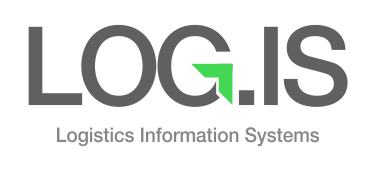Domestic Marketing
Bulog is ready to stabilize the beef price hikes through market operations. Bulog use the remaining stock of four thousand head of cattle to market operations in 2016. Market operations focused on areas of Jakarta and its surroundings. The reason, 70 percent of the national consumption of beef is in Jakarta. And the Capital region is considered to be the most affected by the price hikes than other regions. Market operations is intended to lower the price of beef after the last spike in prices due to charge VAT policy cow.
In the operation of the market, Bulog sell cattle at a price of Rp. 40,000 – 41,000 per kilogram of live cattle. In the form of carcasses, beef prices was Rp. 82,000 per kilogram. So at the consumer level, Bulog beef prices are around Rp. 100,000 per kilogram.
Soybean prices tend to increase. At the level of processing industry, commodity prices have touched Rp. 9,000-12,000 per kilogram. Higher than the normal price Rp. 7,000-8,000 per kilogram. The price increase is considered as the effect of the weakening of the rupiah against the US dollar. Soybean imports have affected prices in the market.
Ministry of Agriculture said the Indonesian soy consumption in 2012 reached 2.5 million tons. In fact, the soybean production in the country averaged only 700-800 thousand tons per year. Conditions then it would trigger a number of tofu and tempe production strike. In addition, the market share by four to five major private suppliers can make prices soar. Market domination by a small group of traders (oligopolies) and the practice of cartel is already a fact in soybean market.
Director of Business Development and Investment Ministry of Agriculture Jamil Musanif said that until now the national cow's milk needs greater than domestic production capacity.
The demand has reached 6 million liters of milk per day, whereas the national production capacity is 1.5 million liters per day. The same thing is said Alim Iqbal, the head of the Directorate of Dairy Cattle and Buffalo Cultivation Livestock Ministry of Agriculture, which revealed that 80 per cent of national milk demand can be fulfilled by imports.
Indonesia will potentially become the world sugar producers for support agro-ecosystem, land, labor. Besides, the prospect of the sugar market in Indonesia is promising with a consumption of 4.2 - 4,7juta ton/yr. Sugar is one of the basic needs for the community and the industry is still continuing to be a problem due to lack of domestic production, while needs continue to increase. Some sugar mills are located in Java, technical relatively old age, so less productive, almost all sugar factories is highly dependent on sugarcane farmers and the limited land on the island of Java. While refined sugar factories which there is as yet produce optimally (capacity utilization of about 40% - 60% in 2008). The rapid development of sugar while increasing production needs relatively not balanced to make Indonesia as an importer of sugar both for raw crystal sugar (raw sugar) as well as industrial sugar (refined sugar). The development of the sugar industry (sugar cane processing) must be integrated from plantations, processing, marketing and distributions supported by stakeholders, including supporting agencies such as R & D, human resources, finance / banking and transport
Types of cassava products are marketed in several regions in Indonesia which are in the form of cassava and gaplek. The different types of these products differentiate its marketing channels. As raw material mill tapioca flour, cassava marketing channels is relatively short, it is associated with the nature of cassava perishable. Fresh cassava for processing purposes tapioca can only be stored for 48 hours. Marketing channels cassava consists of three channels, (1) farmers - traders - plant or snack company, (2) farmers - traders – tapioca companies - plant or snack company, (3) farmers – traders.
From the market side, potential market of corn continues to increase. It can be seen from the development of the livestock industry, which in turn will increase the demand for corn as animal feed.
Corn products are widely used as raw materials for the manufacture of food products. With a picture of the corn market potential, it would open up opportunities for farmers to grow corn or increase corn production.
Marketing process of red chili begins from chili farmers sold to traders. Red chilli obtained from traders then sold to wholesalers, and wholesalers sell red chili gets into various local market. The market conditions can be determined by the high and low barriers to entry the market. High and low barriers to entering the market can be caused by the level of capital and the relationships between marketing agencies.
Indonesia produces Urea, NPK, SP36, ZA and Organic fertilizers, and ammonia as a by-product.
Up to April 2016, the largest production was urea which reached 2.24 million tons, NPK 1
million tons, ZA 225,311 tons and SP-36 reached 154,265 tons and ammonia production was
1,852,696 tons. Public service obligation (PSO) reached 2.99 million tons with urea of 1.24
million tons, NPK 869,773 tons, SP36 346,961 tons, ZA 324,243 tons and organic fertilizer
214,617 tons.
Source: http://www.antaranews.com/berita/567243/harga-turun- perlambat-pertumbuhan- laba-
pupuk-indonesia
Copyright © 2016 Designed by : Thinker Studio. All Rights Reserved.
